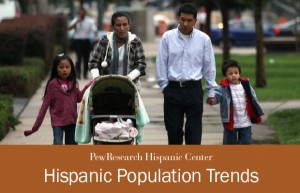LatinaLista — In the days moving forward on immigration reform, the number ’11 million’ will figure prominently. It’s the number of estimated undocumented immigrants, majority of whom are Latino. Yet, the undocumented are only a small portion of the overall 51.9 million Latinos in the United States.
To showcase a more complete picture of today’s Latino population, the Pew Hispanic Center released A Statistical Portrait of U.S. Hispanics.
None of the statistics are new but compiled into one report, they underscore a simmering crisis that exists in the Latino community.
In the next few months, in addition to immigration reform, Congress will be addressing the federal budget too. They will be deciding which programs to slash. With these statistics in mind, it’s clear that any reductions in the budget shouldn’t aggravate an already bad situation and one in which a bad outcome will be felt far beyond Latino communities.
Some of the Pew’s findings, culled from the U.S. Census Bureau’s 2011 American Community Survey include:
- Latinos make up 17 percent of the US population, the second largest demographic after whites.
- 64 percent of Latinos are U.S.-born, a rising trend since 2000.
- 65 percent of U.S. Latinos are Mexican-origin, Puerto Ricans comprise second-largest at 9 percent.
- Two-thirds of Latinos live in just five states: California, Texas, Florida, New York and Illinois.
- Yet, five other states — Arkansas, Minnesota, South and North Carolina and Kentucky — have seen the fastest growth in their Latino populations since 2000.
- 47 percent of all Latino births were to unmarried Latinas.
- Majority of Latinos speak English very well and 25 percent of all Latinos, ages 5 and older, speak only English.
- Median household income is lower among Latinos than in the U.S. overall.
- Latino poverty rate is higher than the US poverty rate overall.
- Latino households are more likely to receive food stamps than all US households.
- Latinos are more likely not to have health insurance.
- Fewer than half of Latino householders own their homes.





